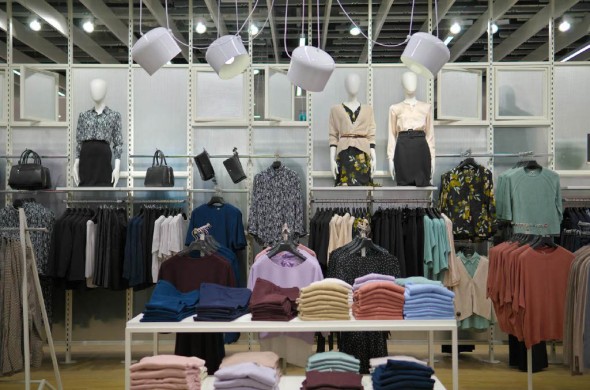Consumer packaged goods (CPG) companies and retailers may be independent intensities, but they rely on one another for a successful business. Collaboration between both parties is essential to meet goals, align processes, leverage data, and manage expectations.
Tactics to improve collaboration between CPG companies and retailers
The development of technology has introduced many new methods to collaborate, but it has also opened the gap for miscommunication. The following strategies ensure a streamlined effort.
Joint planning
Planning is key to success and it’s the starting point for all successful partnerships. Joint planning involves the co-development of a strategy and road map to grow trade. Each party is accountable for doing their part effectively and data should be used to define the target market and buyer journey.
In most instances, joint planning involves conversations between senior management. The sessions helps both parties find common ground and discover shared pain points to overcome.
Category management
Retail consumer trends are constantly shifting and data should be studied closely to identify how retailers and CPGs can meet the consumer’s evolving needs. Retailers and CPG partners should combine their data to determine their offerings on a granular level. Category management involves the discussion of which product SKUs should be offered at specific stores, as well as the variants to suit the customers.
For example, Lays is considered one of the most ‘intimate’ consumer goods brands in the UAE but the popularity of flavors may differ from one region to another. Retailers and CPG companies should assess the data to make sure that the correct flavors are stocked at specific stores in order to meet demand (and reduce wastage).
Trade promotions
Although online shopping has made trade more accessible, 55% of Dubai consumers prefer in-store shopping for certain products. These consumers are positioned for trade promotions.
CPGs can invest funds to support in-store marketing of their product. These promotional activities offer a return on investment as the product reaches an engaged consumer and helps to drive demand. Strategies include price incentives, discounts and rebates. In the process, data is collated for further use.
In-store compliance
Once the deal is done behind the scenes, the next step demands careful collaboration. Retailer execution needs to be carefully managed so that the display complies with merchandising specifications. In addition, promotional timelines should be streamlined to maximize product consumption.
In some instances, CPG companies will provide the display material and specify compliance on the back end. Alternatively, a team will be sent with the products to display the merchandise as required. These details need to be ironed out beforehand.
Order management
In December 2020, there was a global outcry as PS5 and Xbox stock sold out, leaving consumers frustrated by the lack of supply. In the UAE, the popular game consoles were being sold by profiteers for three times the price. This situation is an extreme example of how order demand was mismanaged, but it regularly happens on a smaller scale.
A steady flow of communication ensures that CPG companies have the necessary raw materials to produce enough products to meet retailer needs. Data should be analyzed for valuable insights and various tools can be used to make the process efficient so that manufacturers avoid producing leftover products.
Metrics and measurement
On their own, CPG companies focus on fill rates, profitability, supplier or delivery performance, inventory turns and earnings, and business intelligence among other metrics. While retailers have slightly different key performance indicators (KPIs) such as conversion rate and customer retention, there are a few common metrics between the two.
A shared business plan between CPG companies and retailers is needed to align these common metrics so that each entity can develop precise strategies. Factors such as the number of promotions and detailed investments for trades should line up to meet previously agreed sales and revenue goals.
Reducing friction between CPG organizations and retailers
Various developments such as a shift in channel demand, changing consumption habits, the development of technology, and supply chain resilience can all put pressure on the relationship between CPG companies and retailers.
The following strategies help to reduce friction and streamline success.
Move to a modern cloud IT infrastructure
A resilient IT infrastructure is key to enabling agility. There is a choice of cloud-based infrastructure solutions that allow for scalability, improve the efficiency of collaboration, and offer access to automatic updates.
Workflows and strategies can offer maximum value for customers and cost advantages for businesses with the help of artificial intelligence (AI), big data, machine learning (ML), and application-programming-interface (API) platforms.
The positive impact of modern IT infrastructure is already being seen across the UAE in various businesses, with Amazon Web Services expanding across the region.
Accelerate business outcomes with fast insights
Advanced data architecture gives businesses speedy insights into key data points. Various parts of the product journey offer essential insights to boosting profit, from enterprise shipping data to third-party marketing data.
Each statistic offers valuable insight into ways to boost product consumption. An advanced data architecture makes sure all entities involved can maximize their efforts to meet demand.
Automate complex processes
Technology has created ways to automate time-consuming and complicated processes to optimize efficiency. Various strategies such as AI, ML, and advanced analytics capabilities can drive collaboration and remove speed bumps in partnerships.
For example, dynamic pricing becomes more streamlined with the help of data-driven insights, and automation tools eliminate human error typical in demand forecasting. Time can be saved on repetitive tasks, such as inventory management, and better spent on growth strategy.
Leverage computer vision solutions
Save time and money on stock and promotion management by using computer vision solutions. Both retailers and CPG companies can have eyes on various campaigns and stock levels without delayed communication or idle waiting.
With computer vision solutions, store employees are automatically notified when shelves need to be restocked, and back-of-store levels send alerts to CPG companies for product reorders. In some instances, computer vision solutions are used in conjunction with providing an unattended retail experience, such as the Pepsi® Go experience in Dubai.
Consumer Goods Consulting
These are just a few of the strategies that CPG companies and retailers can adopt in an effort to streamline their relationship and harmoniously work towards common goals.
Ollen Group is one of the best consumer goods and retail consulting firms in the Middle East & Africa region (MEA) offering Retail business management and strategy consultancy with turnkey solutions from strategy to execution. Our expert consultants will help your through your journey.
Read our latest insights, ideas, and perspectives that explore the trends shaping the future of business and society. Our consultancy services go hand-in-hand with these insights, confirming our position as industry leaders. Get in touch to find out more about our consulting services and industry expertise.



